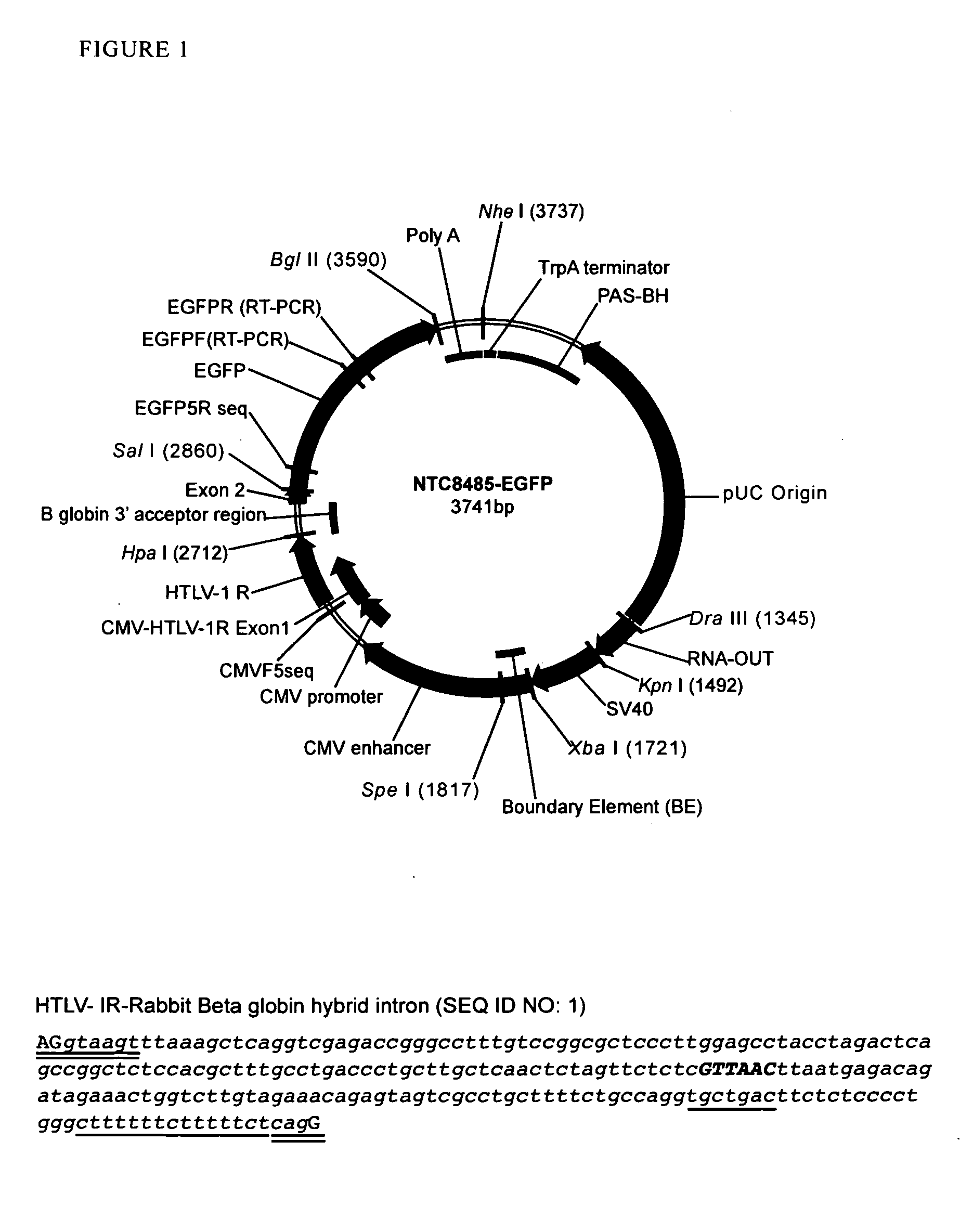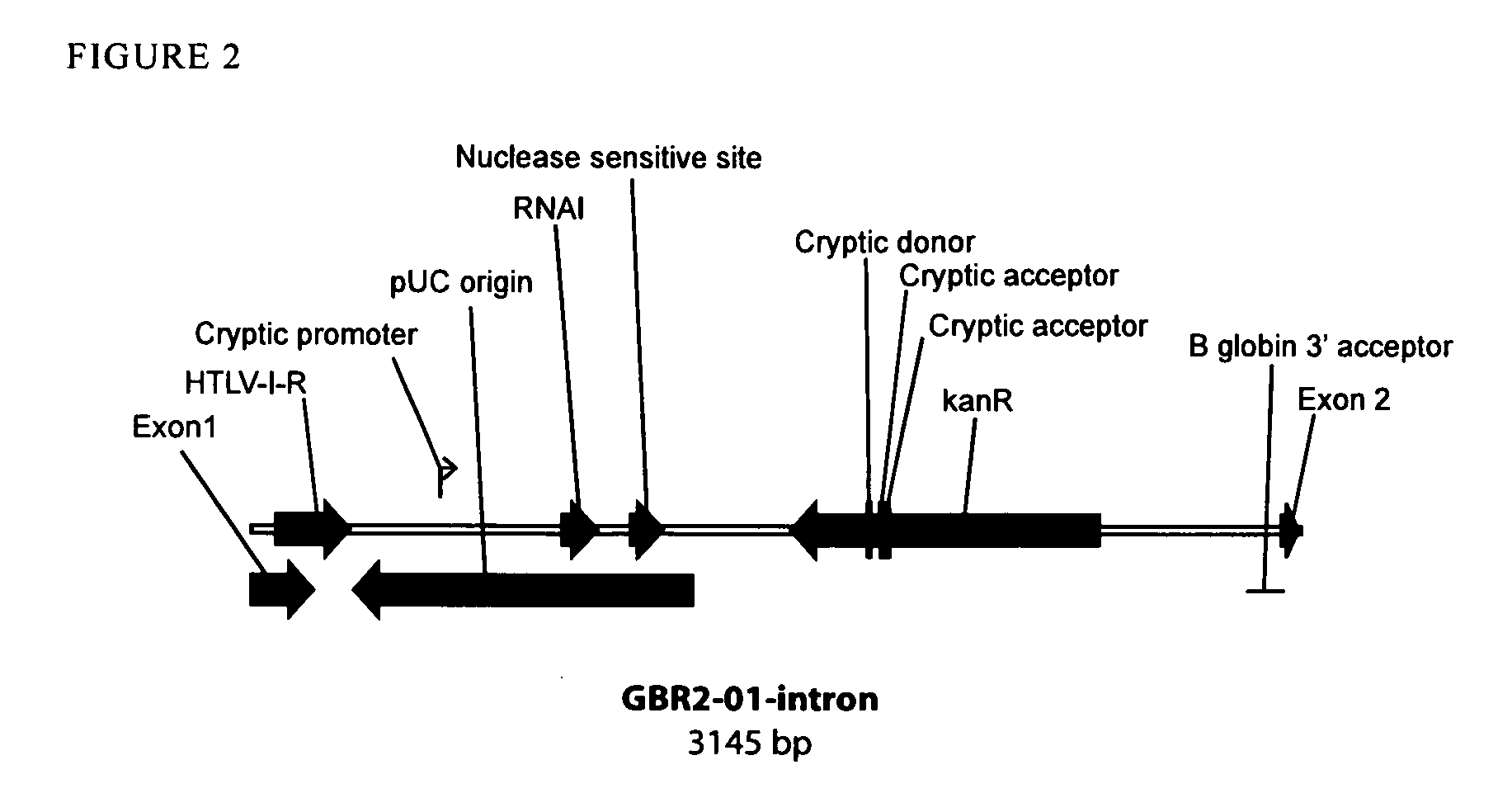Replicative minicircle vectors with improved expression
a technology of minicircle vectors and plasmids, which is applied in the field of eukaryotic expression plasmid families, can solve the problems of high cost of midge and minicircle vector manufacturing methods, low transgene expression, and inability to easily scale, so as to improve in vivo expression and production efficiency. , the effect of high yield
- Summary
- Abstract
- Description
- Claims
- Application Information
AI Technical Summary
Benefits of technology
Problems solved by technology
Method used
Image
Examples
example 1
pUC, R6K and ColE2 Replication Origin Plasmid Replication and Production
[0231]pUC Origin Vector Replication and Production Background:
[0232]The vast majority of therapeutic plasmids use the pUC origin which is a high copy derivative of the pMB1 origin (closely related to the ColE1 origin). For pMB1 replication, plasmid DNA synthesis is unidirectional and does not require a plasmid borne initiator protein. The pUC origin is a copy up derivative of the pMB1 origin that deletes the accessory ROP (rom) protein and has an additional temperature sensitive mutation that destabilizes the RNAURNAII interaction. Shifting of a culture containing these origins from 30 to 42° C. leads to an increase in plasmid copy number. pUC plasmids can be produced in a multitude of E. coli cell lines. pUC plasmid propagation and fermentations reported herein were performed using cell line NTC48165=DH5α dcm attλ::P5 / 6 6 / 6-RNA-IN-SacB or NTC54208=XL1Blue dcm attλ:P5 / 6 6 / 6-RNA-IN-SacB the creation of which are ...
example 2
NTC9385R and NTC9385C Vector Construction, Manufacture and Expression
[0253]The NTC9385C and NTC9385R AF eukaryotic expression vectors incorporating novel ColE2-P9 or R6K derived vector origins, respectively were made. To replace the spacer region encoded pUC origin with a ColE2 origin, the ColE2 origin (+7) (SEQ ID NO:13) combined with ssiA from plasmid R6K (SEQ ID NO:17) from Example 1 was used to make NTC9385C (SEQ ID NO: 63). To replace the spacer region encoded pUC origin with a R6K origin the R6K origin (SEQ ID NO:11) from Example 1 was used to make NTC9385R (SEQ ID NO: 62). The R6K gamma origin vector was constructed by swapping in the R6K gamma origin (SEQ ID NO:1) in a NotI-DraIII R6K origin synthetic gene for the corresponding NotI-DraIII pUC origin region. The ColE2 origin vector was constructed in a similar fashion, by swapping in the +7 ssiA ColE2 origin in a NheI-DraIII synthetic gene for the corresponding NheI-DraIII pUC origin region.
[0254]The 466 bp Bacterial region ...
example 3
NTC9385P2, NTC9385P2a, NTC9385C2, NTC9385C2a, NTC9385R2, and NTC9385R2a Vector Construction
[0265]A series of AF eukaryotic expression vectors incorporating intronic AF-pUC origin, AF-R6K origin or AF-ColE2 replication origins are disclosed.
[0266]FIG. 2 shows bioinformatics analysis of an intron containing the gWIZ vector bacterial region (GBR2) encoded kanR selection marker-pUC origin. This intron is predicted have reduced splicing efficiency and splicing precision due to the presence of numerous splice acceptor sites, splice donor sites, and eukaryotic promoters in the kanR gene. Replacement of the kanR gene with the RNA-OUT antibiotic-free marker results in an improved intron (FIG. 3) since the RNA-OUT sequence is not predicted to contain splice acceptor sites, splice donor sites, or eukaryotic promoters in either orientation.
[0267]However, the pUC origin does contain an experimentally verified cryptic eukaryotic promoter (FIG. 3) which likely would interfere with intron function....
PUM
| Property | Measurement | Unit |
|---|---|---|
| Fraction | aaaaa | aaaaa |
| Mass | aaaaa | aaaaa |
| Length | aaaaa | aaaaa |
Abstract
Description
Claims
Application Information
 Login to View More
Login to View More - R&D
- Intellectual Property
- Life Sciences
- Materials
- Tech Scout
- Unparalleled Data Quality
- Higher Quality Content
- 60% Fewer Hallucinations
Browse by: Latest US Patents, China's latest patents, Technical Efficacy Thesaurus, Application Domain, Technology Topic, Popular Technical Reports.
© 2025 PatSnap. All rights reserved.Legal|Privacy policy|Modern Slavery Act Transparency Statement|Sitemap|About US| Contact US: help@patsnap.com



